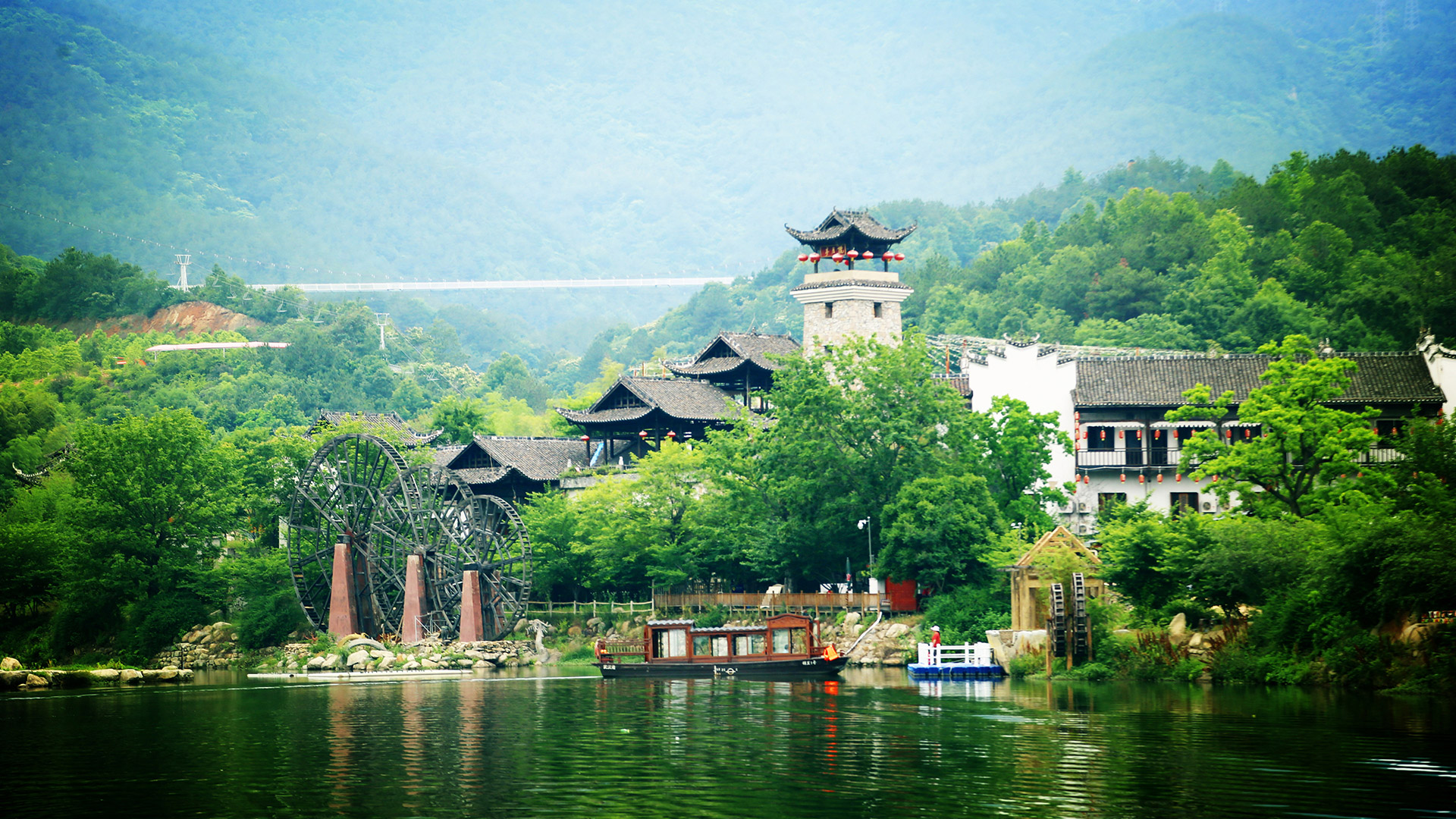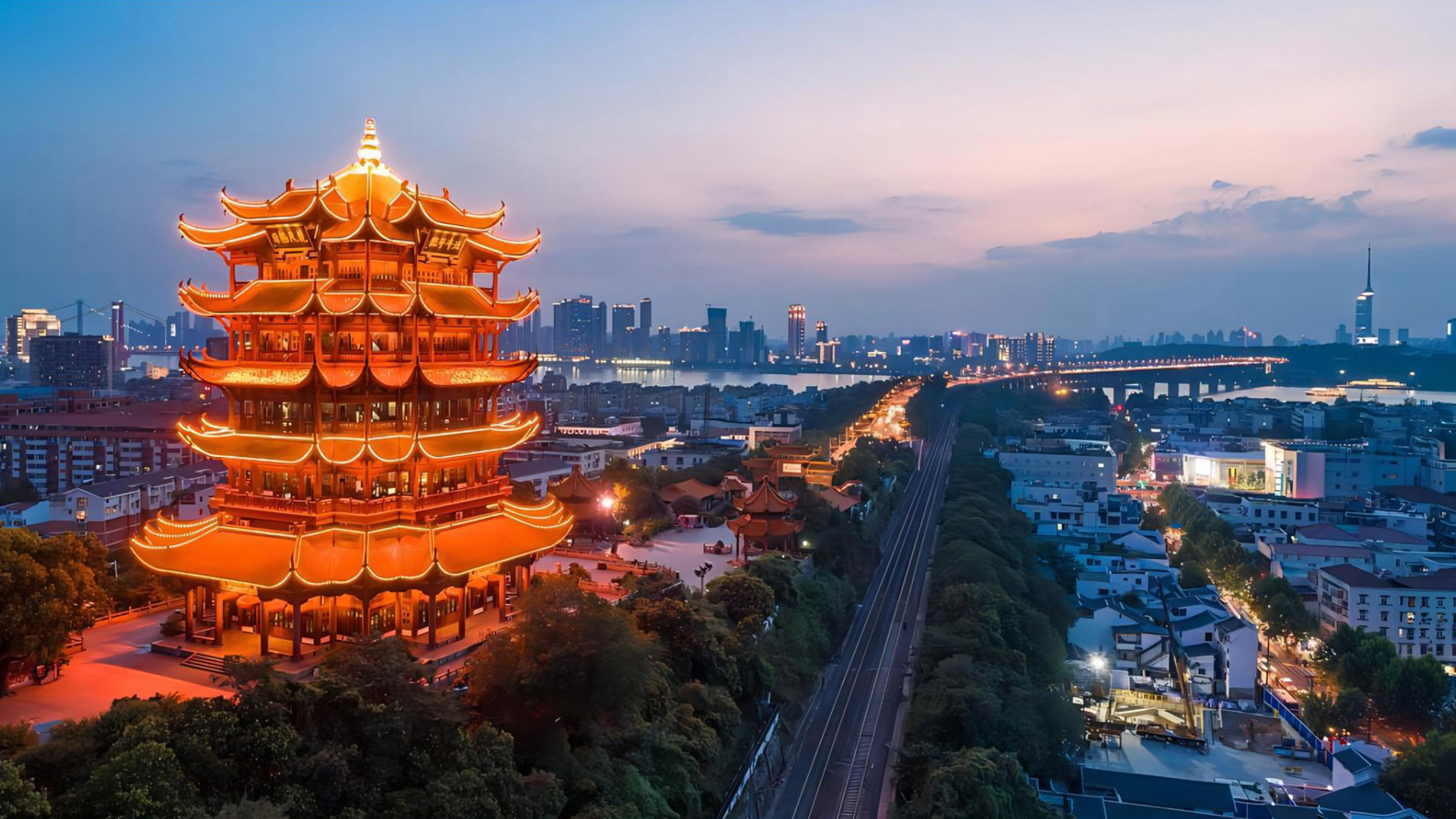
- On 26/04/2023
- In Blogs Travel Tips
- Tags:
Things to Do in Wuhan
Source: chinadiscovery.com
Được mệnh danh là Thành phố ven sông, cái tên Vũ Hán đến từ nguồn gốc lịch sử của thành phố bởi sự kết hợp của Vũ Xương, Hán Khẩu và Hán Dương, được gọi chung là Tam thị trấn Vũ Hán. Vũ Hán nằm ở phía đông đồng bằng Giang Hán, trên ngã ba sông Dương Tử và phụ lưu lớn nhất là Hán Thủy, và được gọi là ngã rẽ chín tỉnh của Trung Quốc. Tất cả đều cái nôi của những nền văn minh rực rỡ với vô vàn di tích lịch sử và di sản văn hóa cũng như các thành tựu kinh tề vượt bật khác.
Bất kể bạn đến Vũ Hán để đi du thuyền trên sông Dương Tử (Du thuyền Vũ Hán – Trùng Khánh, Du thuyền Nghi Xương – Trùng Khánh, hoặc Du thuyền Thượng Hải – Trùng Khánh) hay muốn khám phá chuyên chuyên đề về thành phố ven sông này, Vũ Hán có rất nhiều đề tài để bàn luận như Hoàng Hạc Lâu, Bảo tàng tỉnh Hồ Bắc, Chùa Quy Nguyên… hơn nữa, một chuyến đi đến Quần thể Núi Võ Đang để trải nghiệm các buổi tập thái cực quyền của Đạo giáo thì không còn gì tuyệt vời hơn.
Because of its key role in domestic transportation, Wuhan was sometimes referred to as the Chicago of China.” It is recognized as the political, economical, financial, cultural, educational and transportation center of Central China.
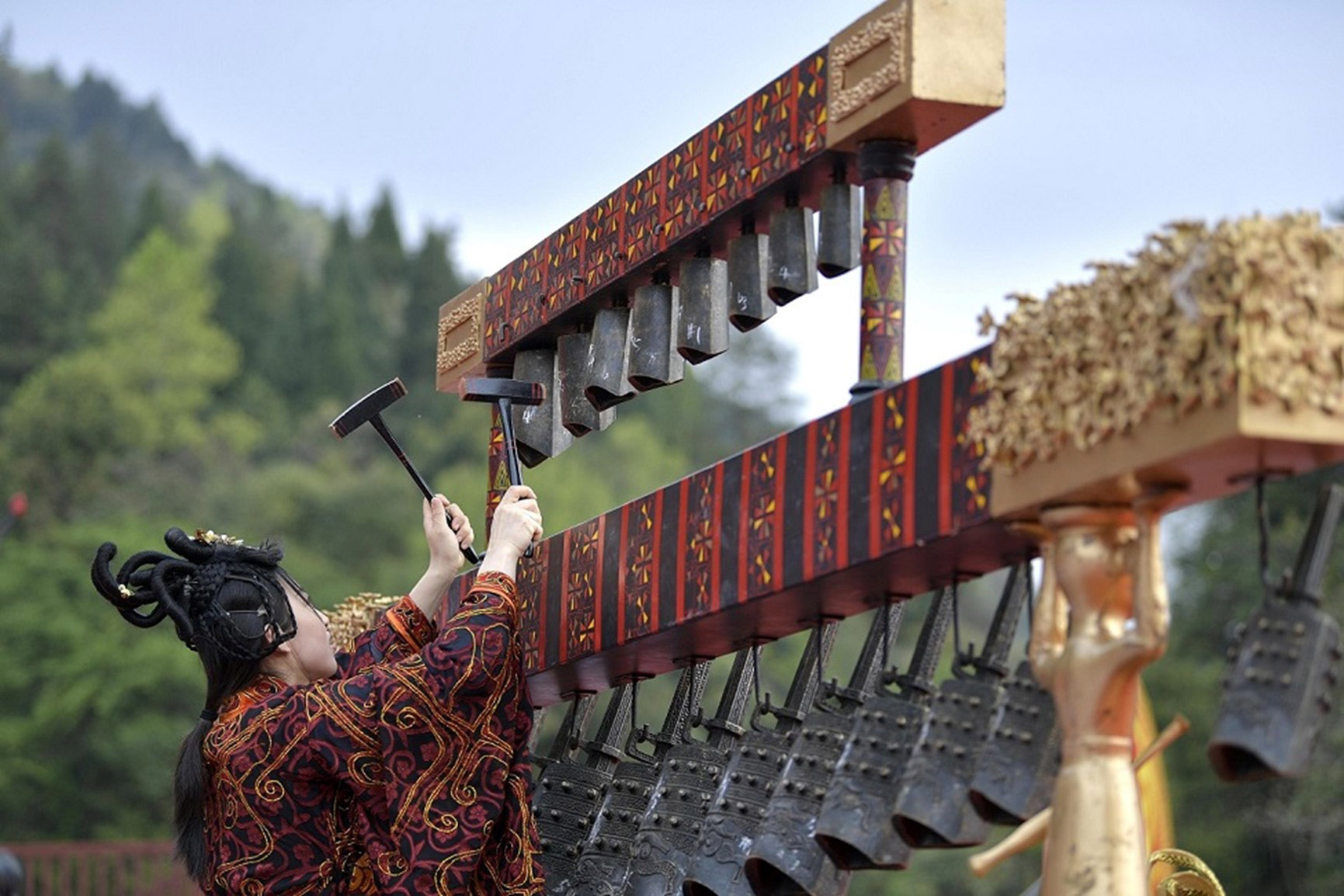
Hubei Provincial Museum
Located on the shore of East Lake, Hubei Provincial Museum is one of China’s best museums. It could be divided into three parts: Chime Bells Exhibition Hall, the Chu (a state in the Spring and Autumn Period) Culture Exhibition Hall, and the Comprehensive Exhibition Building.
Among its highlights are items excavated in 1978 from the tombs of the Marquis of Yi, an eminent figure from the Warring State Period. He died in 433 BC and was buried in a lacquered coffin, accompanied by his concubines, his dog, and thousands of bronze, stone, and wooden items. Many of these are on display, but the most impressive is the panoply of bronze bells which produce two notes each when stuck.
The Zeng Hou Yi Mausoleum — This grand four-chamber mausoleum has been buried for 2400 years. 15404 objects have been unearthed from these chambers which add up to a total area of 220 square meters. Among these splendid objects, there is indeed an orchestra consist of chime stones, Qin, Se, panpipes Chi and the world’s largest and heaviest bronze chimes. There are also oceans of jade ware and lacquer ware that, despite their daily usage, were designed most delicately and unique.
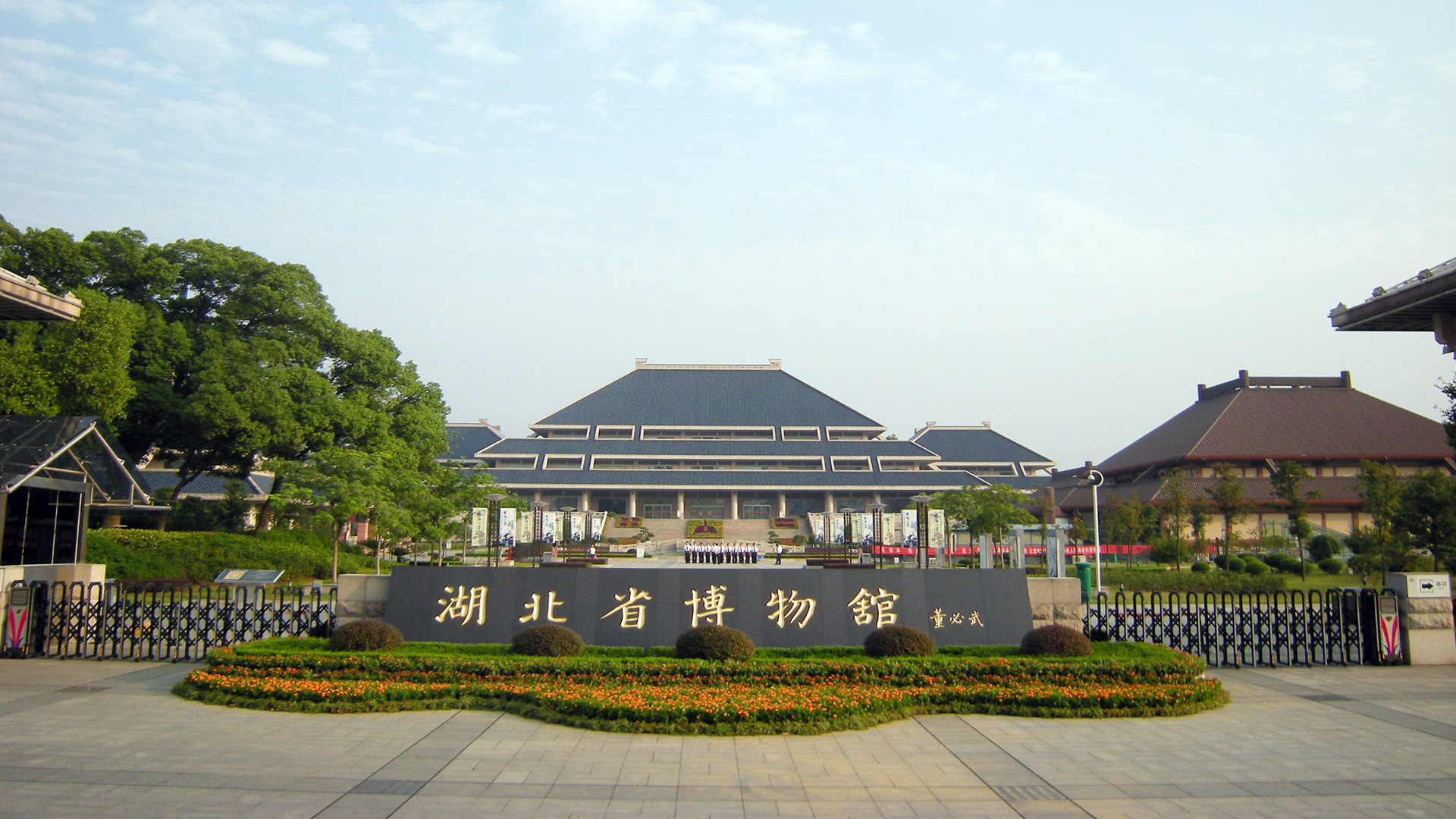
Yellow Crane Tower
Yellow Crane Tower is located on Snake Hill in Wuhan. Enjoying the fame of 'The First Scenery under Heaven', Yellow Crane Tower is one of the most renowned towers south of the Yangtze River. Its cultural significance led to its being made the symbol of Wuhan City.
According to records, the tower was first built in 223 AD during the Three Kingdoms Period (220-280). And a famous poet during Tang Dynasty, Cui Hao, made the tower well known throughout China with his poem “Yellow Crane Tower”. The Yellow Crane Tower offers visitors an abundance of things to see. On top of the tower, visitors are treated to a fabulous panoramic view of the Yangtze River, its bridge and the surrounding buildings in Wuhan city.
The Yellow Crane Tower offers visitors an abundance of things to see. Exhibits on each floor have a theme, for example, the theme of the first floor is about legend. On the wall, there is a nine-meter (about 30 feet) long and six-meter (about 20 feet) wide painted porcelain picture which depicts clouds, rivers and cranes to represent a romantic mood in the heaven. The third floor mainly shows poems written to praise the tower in different dynasties. On top of the tower, visitors are treated to a fabulous panoramic view of the Yangtze River, its bridge and the surrounding buildings in Wuhan City. Outside the tower, there are bronze yellow cranes, memorial gateways and pavilions.
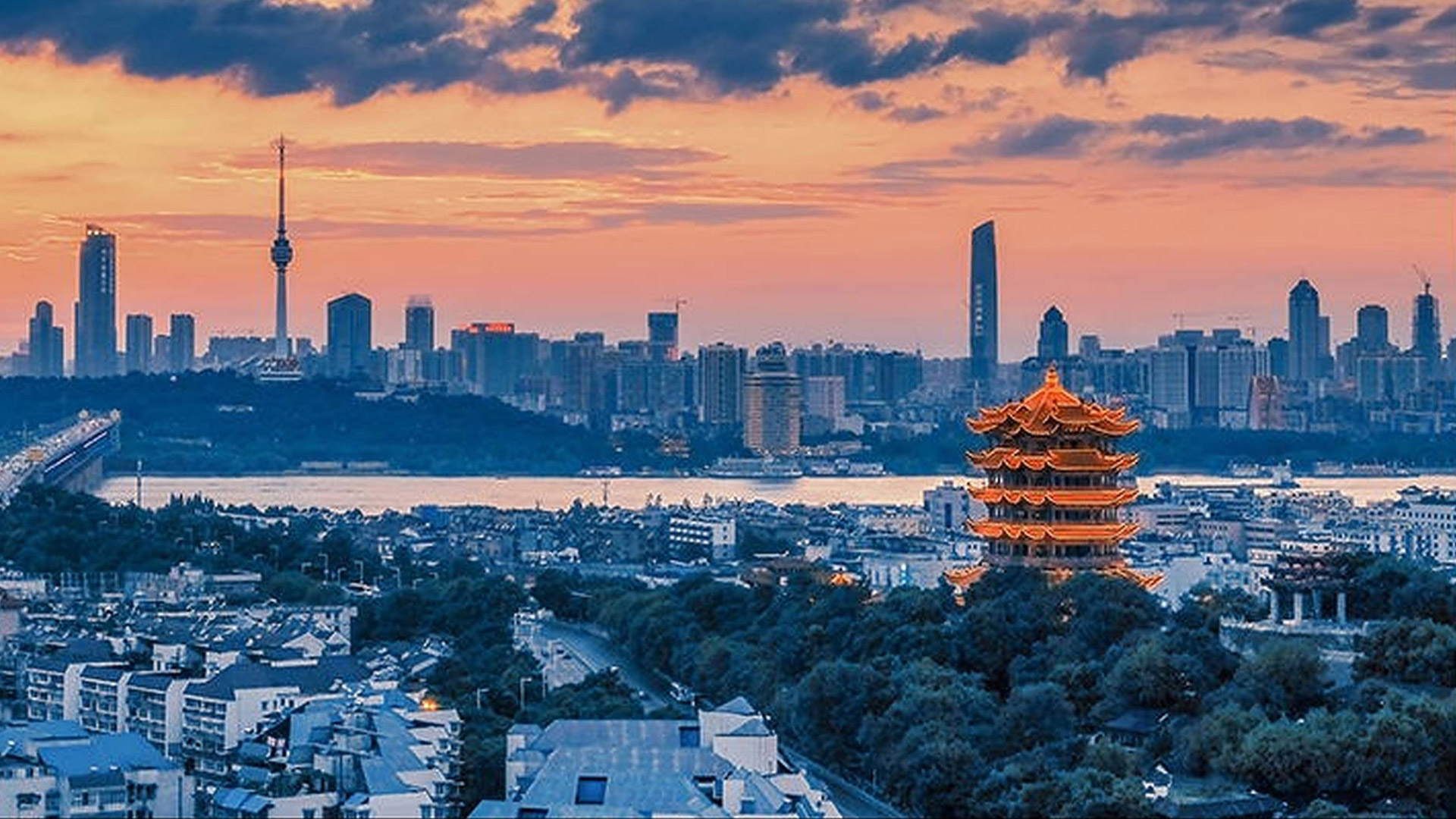
Guiyuan Buddhist Temple
Guiyuan Temple is one of the four biggest temples for Buddhist meditation in Hubei as well as an important Buddhist temple in China. Guiyuan Temple is famous not only for spreading Buddhism throughout the whole country, but also for perfect architecture, excellent sculpture and rich collection of Buddhist doctrine among Buddhist temples.
First built in the early Qing Dynasty (1644-1911) by two monks named Baiguang and Zhufeng on the base of Sunflower Garden owned by a poet. Covering an area of 46,900 square meters with floor space of 20,000 square meters, the temple consists of Daxiongbaodian Hall, Arhat Hall, Sutra Collection Pavilion etc.
The eastern courtyard is where the entrance is located, and it is easily identifiable because of its bright yellow-orange color and four large red lanterns hanging from the corners of the traditional hip roof. Engraved on the lintel of the main gate is the name of the temple.
But the southern courtyard holds the most interesting part of this temple: 500 statues of Lohan (also known as Arhats), or Buddhist disciples that have achieved enlightenment. Each statue has individual traits and a unique facial expression. Legend has it that upon entering, a person is supposed to randomly choose the statue of a Lohan. From that starting point, he or she should walk along the line of Lohan statues in either direction and count them until the person reaches his or her age. The facial expression of the last Lohan counted is supposed to be a reaction of the Lohan upon seeing the person’s future.
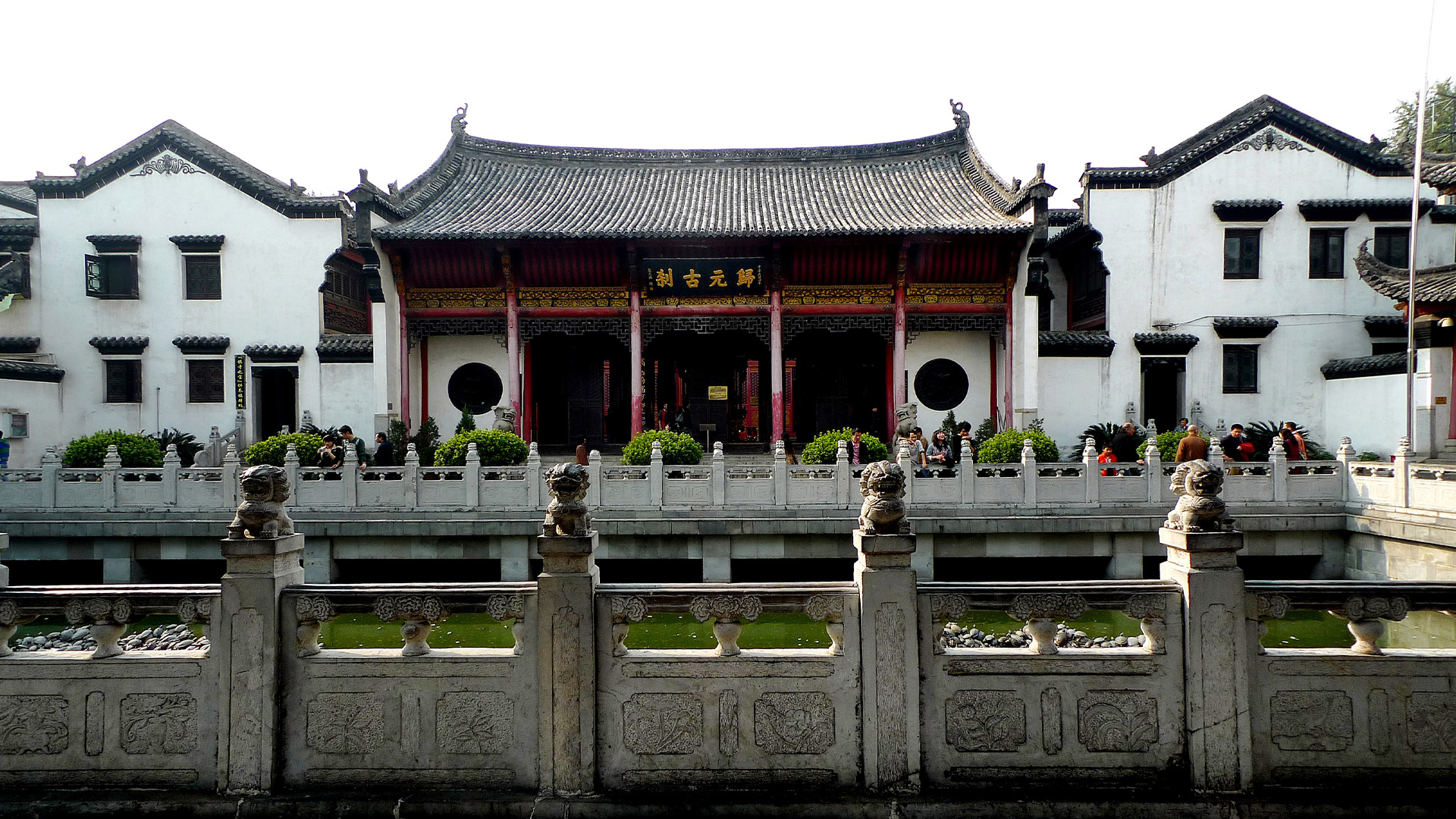
East Lake
East Lake, located on the south bank of the Yangtze River, is the biggest scenery tourist attraction in Wuhan and also the largest lake within a city in China. It covers an area of 87 square kilometers (33 square kilometers of water area). Because of its winding banks and crisscrossing ponds and brooks, it is called “a lake with 99 bays”. And it gains the reputation of “the lake looks like sea, the sea seems as the lake”.
Also, you could have a nice walk in East Lake Scenic Area to explore the ancient Chu culture, unique gardens and Sea of Birds. Ferry rides are available to explore the scenic are around East Lake.

Mulan Heaven Lake Scenic Area
Covering 4800 hectares, Mulan Heaven Lake Scenic Area is regarded as the “Jiuzhaigou Valley of Hubei, Lushan Mountain of Wuhan”. It is said that General Mulan (a woman is Sui Dynasty) watered her horse in the pool when she was on the way to the battle field. And because the pool is with high altitude, then people called this pool Mulan Heaven Pool.
Mulan Heaven Lake Scenic Area is divided into scenic resort and leisure resort. The main peak is 520.6 meters above sea level, which belongs to the vein of Dabie Mountains. There are gully aspects and lush forests, water continuously throughout the year, which shows the landscape of wetland ecosystems. You could do the grass skating along the slide way, which is adventurous and exciting.
It is 55 kilometers away from the city center and 45 kilometers away from the Tianhe Airport. With an area of 3,200,000 sqm, it is divided into sightseeing areas and resort areas. In the Mulan Pool of Heaven, there is a huge valley stretching for 5 kilometers. The "Four Superb Sceneries", namely, cascades, streams, grotesque stones and peculiar woods compose more than 200 natural landscapes, presenting countless and distinct attractions to visitors. The fall between the large and small pools is about 380 meters in length. It is praised as the "Jiuzhai Valley in Hubei Province" and "Mountain Lushan in Wuhan".

Heptachord Terrace (Guqin Tai)
The Heptachord Terrace was built in honour of the sincere friendship between Yu Boya and Zhong Ziqi during the Song Dynasty (960-1279). With great layout and beautiful scenery inside, many people come to visit here each year.
Heptachord Terrace (Guqin Tai in Chinese) is located on the south bank of Moon Lake, near the western foot of Tortoise Hill. It is said that in the Spring and Autumn Period (770-476 B.C.), a famous musician Yu Boya once was stranded here by a sudden heavy rain. He played a piece of music High Mountains and Flowing Steams on the boat, and a woodcutter, Zhong Ziqi, heard his music.
Yu Boya found that Zhong Ziqi could completely understand his music. So he invited Zhong Ziqi to come into the boat, and the two discussed the music for a whole night. The next day, they made an appointment that they would meet here one year later. But unfortunately, Yu Boya only saw the grave of Zhong Ziqi at the appointed date. Zhong Ziqi, the only person who could understand his music passed away. Yu Boya was so depressed and grief-stricken that he played the piece of music in front of the grave and then smashed his heptachord and never played music again.
A trip to the Heptachord Terrace will help tourists appreciate the friendly nature of Chinese people and have a better understanding of the stress they place upon sincere affection.
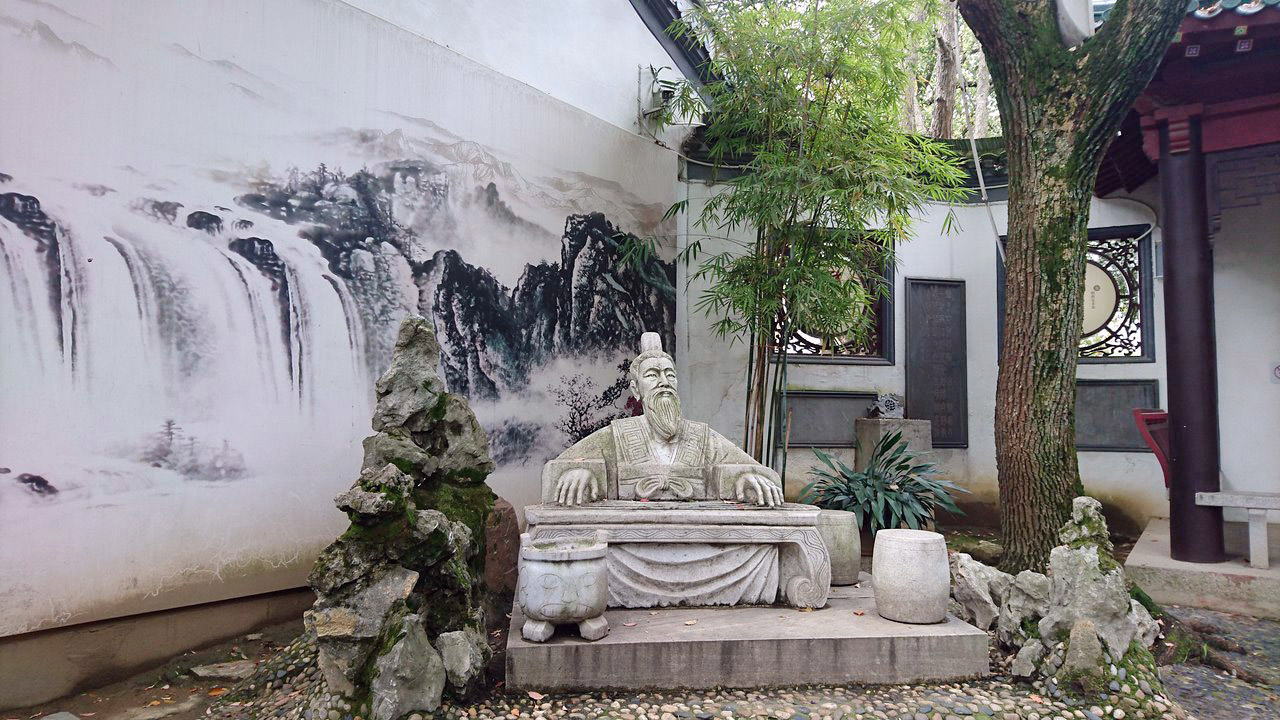
Wuhan Yangtze River Bridge
As the first highway-railway bridge, as well as the first bridge over the Yangtze River, Wuhan Yangtze River Bridge was built in 1955 and opened to traffic in October, 1957. The bridge is 1670.4 meters (5480.6 ft) long with 8 piers and 9 holes. The upper floor is used for motorcars and the lower one for trains.
Visitors can climb the bridge by elevators on the sight-seeing towers at either end of the bridge. Standing on the tower, visitors can appreciate the beautiful landscape of Wuhan City and the splendid Yangtze River.
Wuhan lies at the heart of Central China and is a hub from transportation between the Central Plain in northern China and the trading ports of Guangzhou and Hong Kong in southern China. The Beijing-Wuhan railway line went into full service in 1906, followed in 1936 by the Wuhan-Guangzhou railway line. Between that time and the bridge's completion in 1957, railway cars travelling between northern and southern China had to be ferried over the Yangtze on barges, a laborious and dangerous practice.
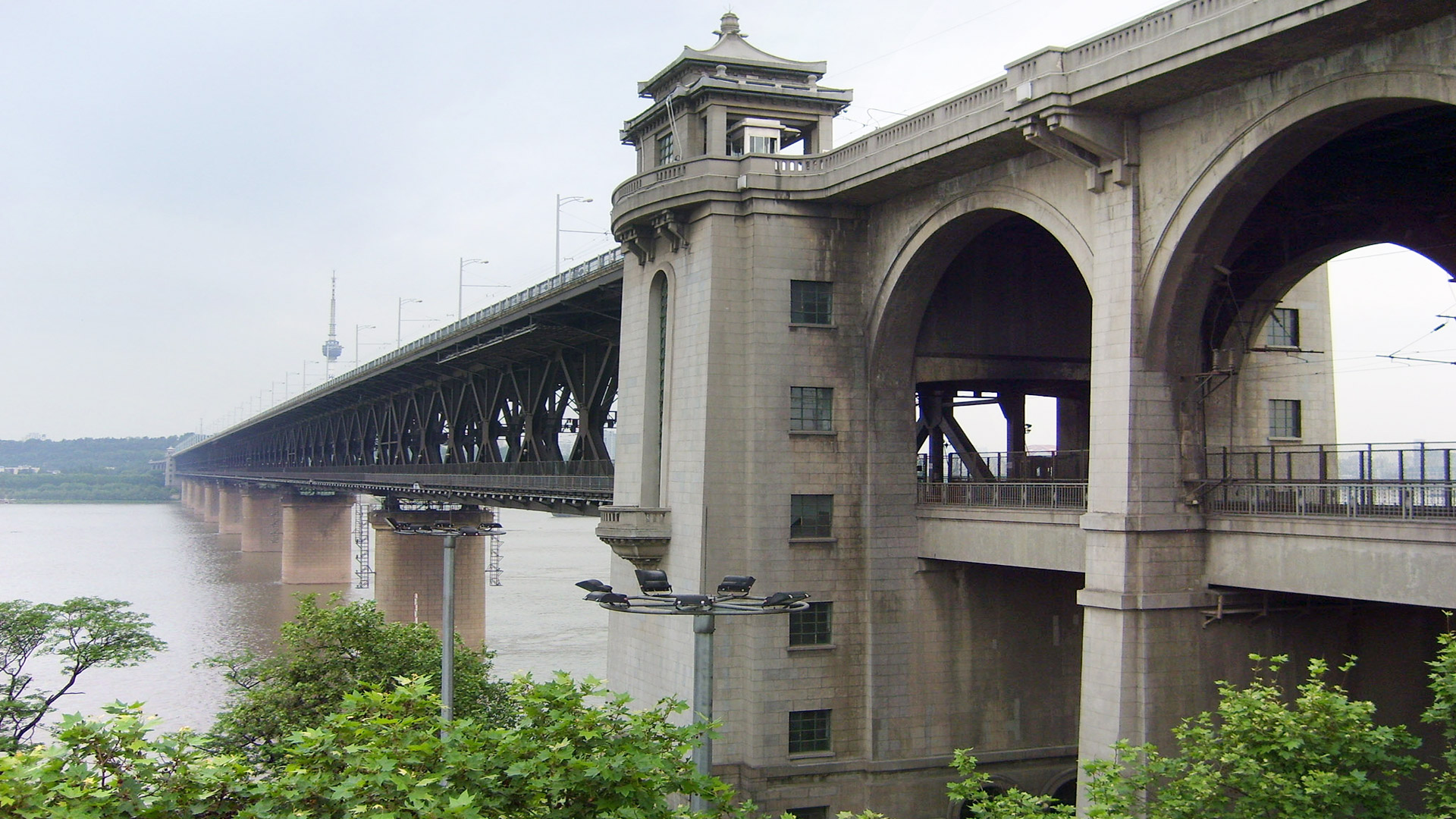
Mount Wudang
Mount Wudang has been called the No.1 Celestial Mountain in China. It comprises of 7 peaks, 36 cliffs and 24 valleys. Its main peak, called Heavenly Pillar Peak stands at a statuesque 1612m and together with the other mist-shrouded peaks, creates a spectacular vision.
The buildings in the Wudang Mountains exhibit exceptional architectural art and technology and represent the highest level of Chinese art and architecture achieved over a period of nearly 1,000 years. They are examples of religious and secular buildings closely associated with the growth of Taoism in China and lavishly endowed by successive Emperors. As an exceptionally large and well-preserved Taoist building complex it is important material evidence for studying early Ming politics and the Chinese history of religion.
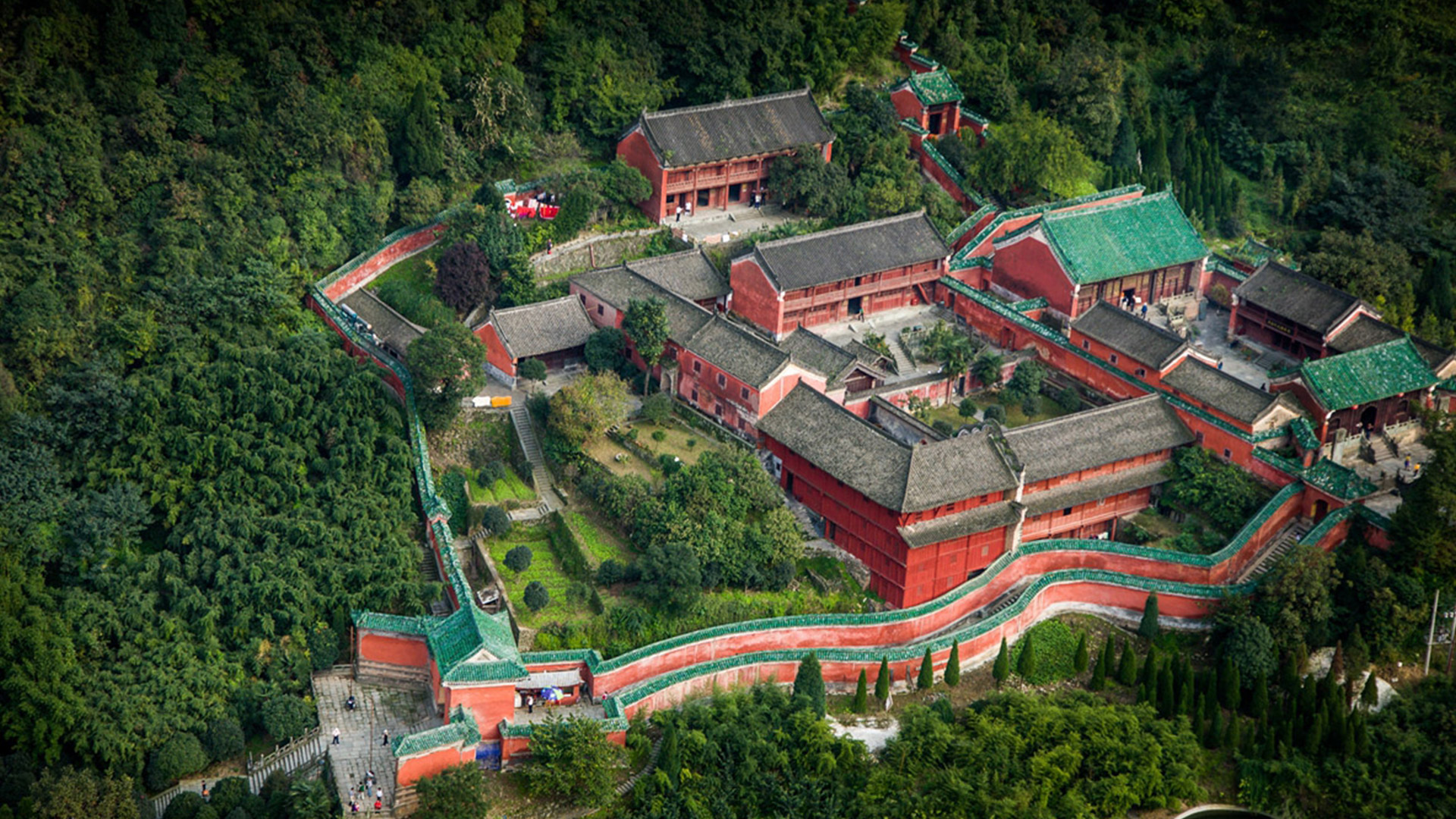
The Ancient Building Complex reached its apogee during the Ming dynasty, with 9 palaces, 9 monasteries, 36 nunneries and 72 temples, following the major building campaign undertaken by Emperor Zhu Di to align his imperial regime with Taoism. Today, 53 ancient buildings and 9 architectural sites survive, including the Golden Shrine and the Ancient Bronze Shrine, which are prefabricated buildings in bronze made in 1307; the stone-walled Forbidden City of 1419; Purple Heaven Palace built originally in the 12th century, rebuilt in the 15th century and extended in the 19th century; the Nanyang Palace of the 12th and 13thcenturies; the Fuzhen Temple of the 15th and 17th centuries and the stone Zhishi-Xuanyue Gateway built to mark the entrance to the Wudang Mountains in 1522.
Mount Wudang, with its natural beauty exquisite architecture and rich history, is worthwhile a detour from Wuhan. For its enchanting scenery and the legend of home of gods, many Taoists and hermits came to cultivate in Wudang Mountain, it was regarded as the origin place of China Taoism. Mount Wudang is honored across China with the sobriquet as “the first famous mountain under heaven.” Today, it’s recognized as an architectural achievement and in 1994, UNESCO bestowed Wudang Moutain World Cultural Heritage status.
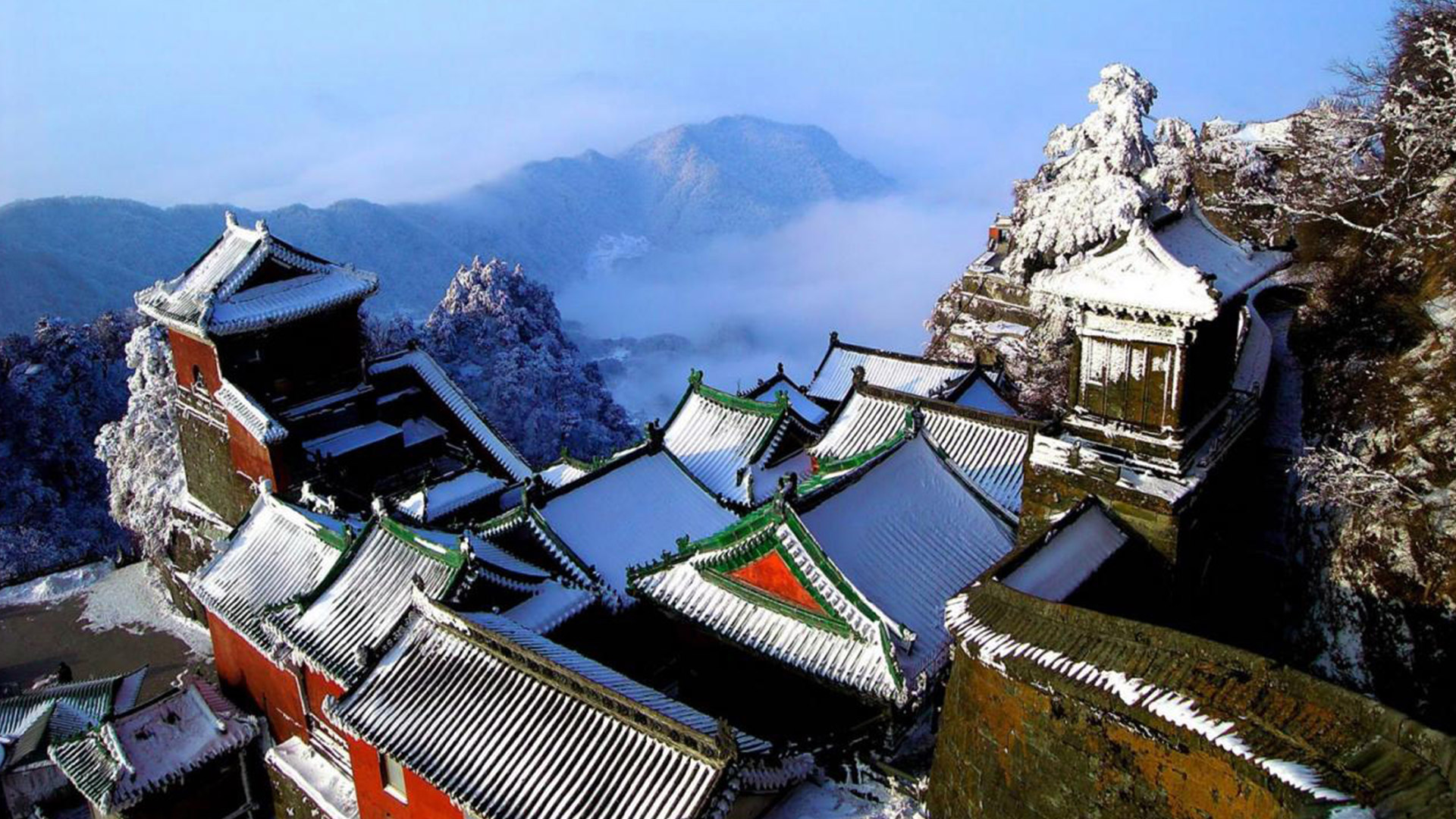
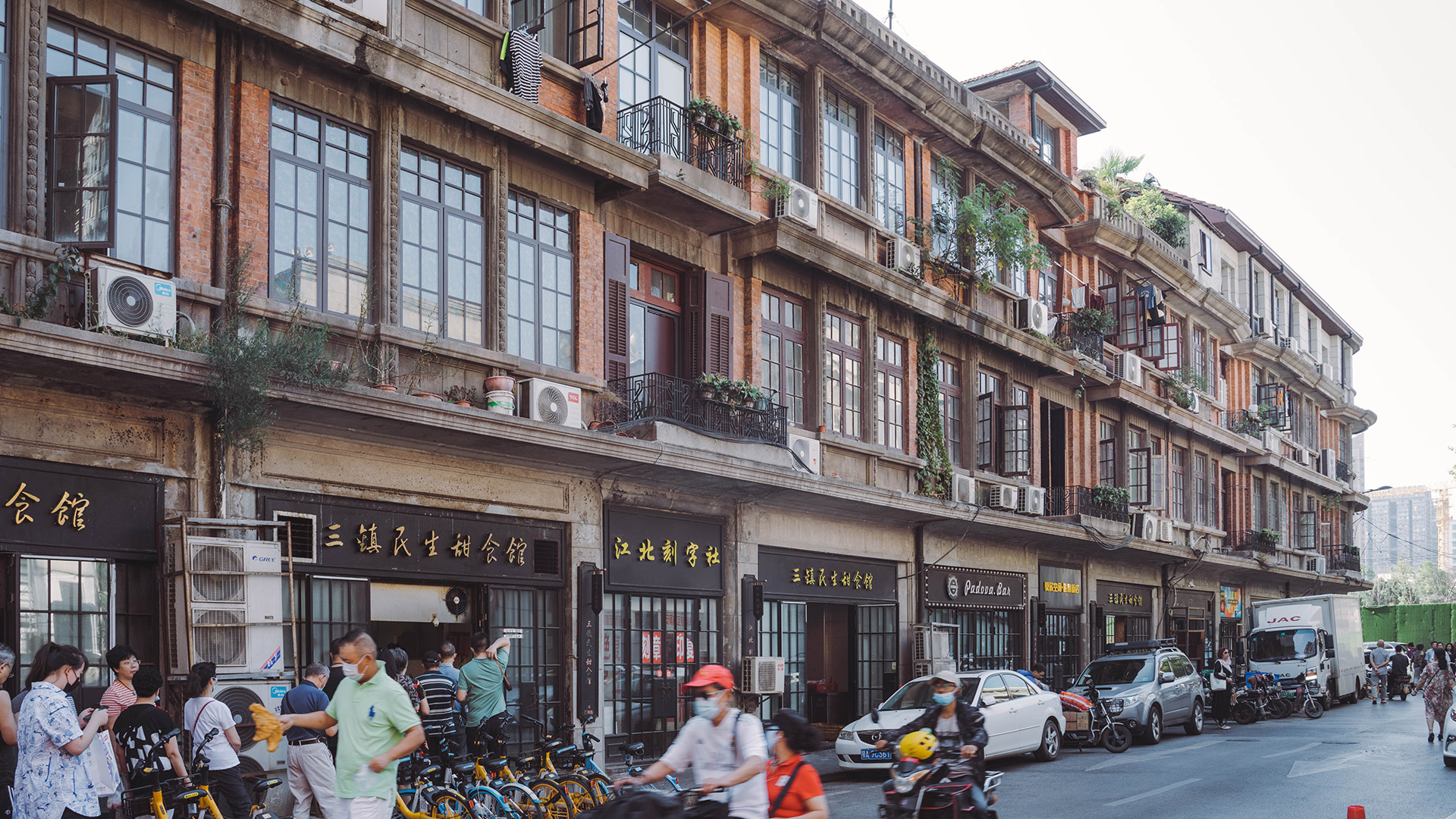
Thien Xuan Travel
Park 2, 208 Nguyen Huu Canh, Ward 22,
Binh Thanh District, Ho Chi Minh City, Vietnam
booking@thienxuantravel.com or gd@thienxuantravel.com
Hotline: +84 888 890 898
Explore more Wuhan: Wuhan Surrounding Attractions | Featured Activities in Wuhan | How to Get to & around Wuhan | Hotels & Hostels in Wuhan
